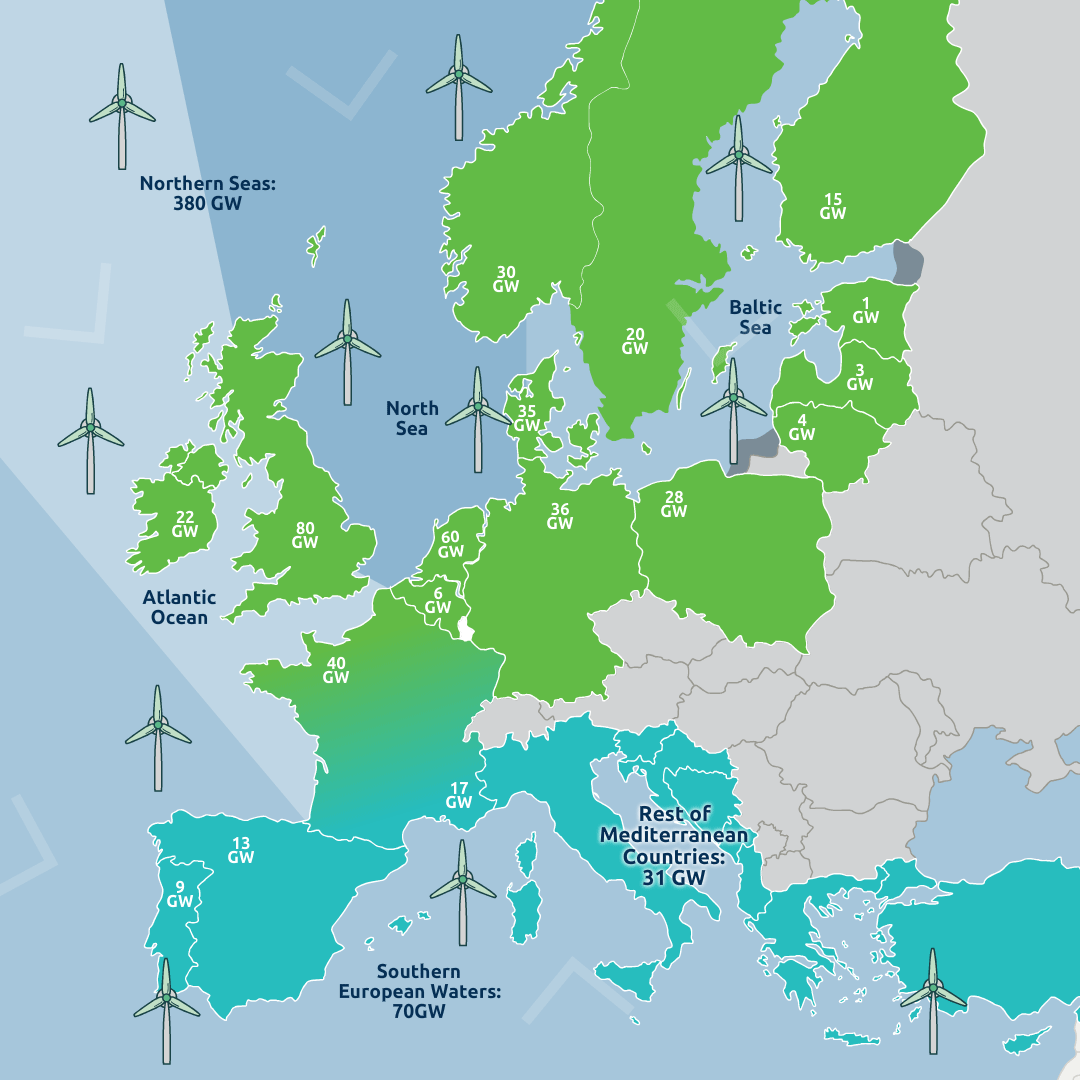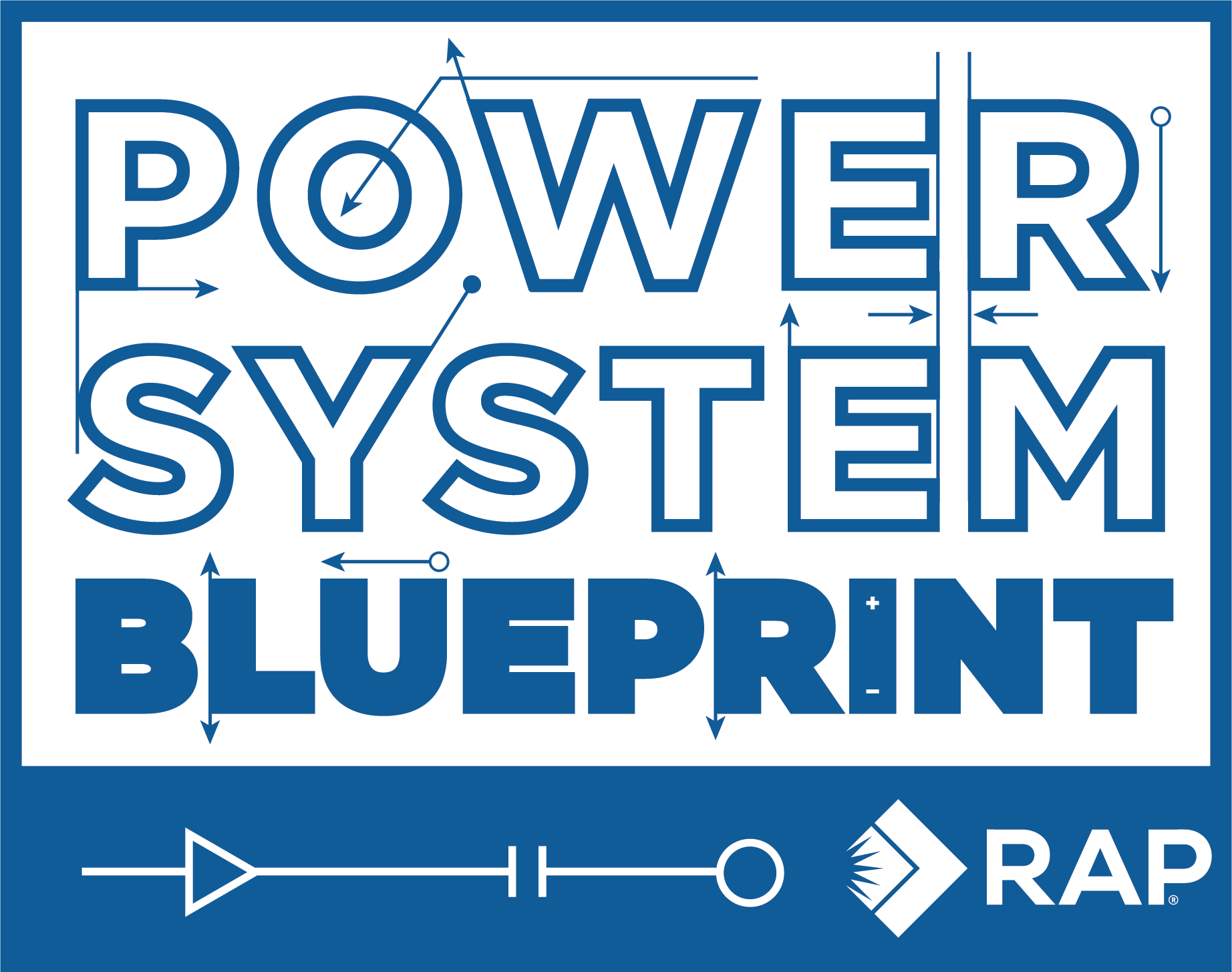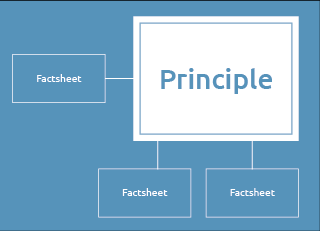SUMMARY
Offshore wind is a special resource. Though there is little legacy infrastructure, the EU has ambitious plans to expand the current capacity of 25 GW in 2020 to 450 GW by 2050. This requires testing new ways to develop the massive infrastructure required through a collective European utilisation.
WHAT
Rapid and large-scale offshore wind development
HOW
Coordinate offshore infrastructure development and market integration
WHO
EU or regional cooperation entities
WHEN
Immediately
To have a chance of exponentially increasing offshore wind capacity in time for the 2050 net-zero decarbonisation goal, we need to move beyond the current practice of coastal states linking wind parks to their onshore power system one by one and to initiate more cooperative solutions, most notably:
Joint planning
Each element of the offshore grid needs to be built with a master plan of a fully developed, meshed gridmeshed grid A power grid layout that can deliver power through multiple interconnected lines, making a mesh (versus radial) grid topology. in mind. No framework for incentivising anticipatory investment would work as efficiently as a master plan that optimises the value of each component towards developing the overall resource whilst considering environmental and other use limitations Planning the grid based on the best generation location identified in advance is an important element in delivering electricity from new renewable capacities to load centres (see the example of CREZ in Supporting Consumer Infrastructure factsheet).
Joint development and financing
As private investors are increasingly ready to build offshore wind parks without financial support, the associated grid infrastructure becomes the crux of rapid deployment. The default case up to now for transmission development is that it be planned and built by a single incumbentincumbent Market leading entity, often long standing with inherited customers or assets following privatisation/unbundling. It may also hold market power. transmission system operator (TSO) or neighbouring TSOs. This runs the risk of coordination problems because the value of investment in new offshore grid elements and offshore wind parks are dependent upon the timely completion of other elements developed by other TSOs. Second, the entire grid can be built quicker and cheaper if its components are awarded competitively in packages of discrete grid elements (see Accelerating Transmission Network Development factsheet). Additionally, it would constrain and delay development by making it reliant on the financing capacity of individual TSOs in each of the individual coastal states. These can be tackled by contestable approaches to grid development, which includes wind developers as well.
We need to bring the construction and the financing of the offshore grid under the joint governance framework, meaning that any Member State could contribute to the financing of offshore renewable energy grids and receive renewable credits to be counted against the country’s contribution towards the joint 2030 EU renewable energy target.
Joint operation
Disjointed operation of an integrated offshore wind energy grid will never deliver the full value of such a massive undertaking. The EU strategy envisions the use of regional coordination centres (RCCs) in the midterm operating regime, but we should rather use the unique characteristics and challenges of the offshore energy resources as an ideal opportunity to implement the regional independent system operator (ISO) model now (see Independent System Operators factsheet) in anticipation of possible application elsewhere in Europe. The setting up of an offshore bidding zonebidding zone The largest geographical area within which market participants are able to trade electricity without network capacity allocation. or zones (depending on offshore congestioncongestion Whenever a particular element on the transmission or distribution network reaches its limit and cannot carry any more electricity. Also a situation where trade between two bidding zones cannot be fully accommodated because it would significantly affect the physical flows on network elements that cannot accommodate those flows.) would provide for the efficient market integration of offshore wind generation.
Case Study
The Kriegers Flak Grid Solution, on the one hand, connects a Danish and a German offshore wind farm to their respective onshore grids; on the other, it connects the transmission grids of Denmark and Germany, thus enabling a transnational power exchange by linking the two farms. This hybrid grid allows for the delivery of wind to two national systems and markets and utilizes the residual grid capacity as a cross-border capacity in light wind conditions. This system, put into operation in 2020, is the first of its kind worldwide and allows for better grid utilisation. Similar projects, incorporating the idea of dual grid use, could be planned in packages with a master plan in mind for minimizing the kilometres of grid needed for delivering offshore wind to consumers.
Possible disposition of offshore wind capacity to meet the Green Deal 2050 targets

Source: Freeman, K. et al. (2019). Our, our future. How offshore wind will help Europe go carbon-neutral. WindEurope has granted permission to use this information.
Key Recommendations
- Initiate a coordinated offshore grid development based on a regional master plan, much along the lines of the proposed TEN-E Regulation that foresees joint integrated offshore network plans per sea basin.
- Ensure single governance for financing with contributions from all Member States.
- Arrange system operations by ISOs.
References and Further Reading
- Hogan, M., Jahn, A., & Pató, Z. (2020). Sea breeze: Measures to ensure a collaborative and cost-efficient future for offshore wind in Europe. Regulatory Assistance Project.
- DIW Econ. (2019). Market design for an efficient transmission of offshore wind energy. Ørsted Offshore Wind.
- EnergiNet. (2020). Kriegers Flak — Combined grid solution.
- European Commission. (2020). An EU Strategy to harness the potential of offshore renewable energy for a climate neutral future.
- Skillings, S., & Strabac, G. (2021). Offshore wind in the north seas: From ambition to delivery. E3G and Imperial College London.
- WindEurope. (2021). Offshore wind in Europe — Key trends and statistics 2020.
- Freeman, K., Frost, C., Hundleby, G., Roberts, A., Valpy, B. Holttinen, H., Ramirez, L. & Pineda, I. (2019). Our, our future. How offshore wind will help Europe go carbon-neutral. WindEurope.
- Published:
- Last modified: August 13, 2024

 Quick guide on how to use this website:
Quick guide on how to use this website: